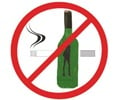Daily alcohol consumption more common in people over 65 years of age.

‘Older people out-drink their younger counterparts making them prone to chronic diseases like liver cirrhosis, alcohol-related brain injury, cancer and cardiovascular diseases. Drinking among younger peers puts them at long-term health risks.’





Roughly one-third had been given their first drink by their parents and about 3 in 5 had their last drink under adult supervision, the report showed. Excessive alcohol consumption is the leading contributor to illness and deaths in Australia for people up to 44 years old, costing the NSW economy more than $3.87 billion a year. 1 in 4 adults drink at levels that put their long-term health at risk, a decline of 5.5 per cent over the past decade, the report showed. It also found Aboriginal people were equally likely to abstain from drinking alcohol as non-Aboriginal people, though Aboriginal people who did drink were more likely to do so at risky levels.This stark generational disparity is often overlooked in Australia, where the short-term harms of alcohol can often take precedence over the health effects of long-term drinking. The findings among older Australians showed a "worrying trend", especially when this group exceeded four drinks a day. This makes the older population prone to chronic diseases like liver cirrhosis and alcohol-related brain injury. Alcohol risk awareness campaigns had predominantly targeted youth drinking educating them about alcohol-related harms, addiction specialist Adrian Dunlop said.
But Australians' attitudes and behaviours towards alcohol were clearly shifting. Young people were delaying their first drink, and drinking at less hazardous levels than they used to. The amount of 15-24 year olds sent to hospital with acute alcohol problems decreased from more than 3500 in 2007 to about 3000 in 2015. The number of high school students who reported drinking dropped from 3 in 5 in 2005 to 2 in 5 in 2014. Dr Chant said such results, including the report's finding that high school students are choosing to start drinking at a later stage, were pleasing. 'It is also encouraging to see there are a decreasing number of adults drinking at levels that increase long-term risk of harm,' Dr Chant said. But she said a lot could be done to reduce alcohol-related harms, particularly among men, young adults, Aboriginal people and those living in regional or remote areas. Excessive drinking contributes to relationship and family problems, public intoxication and other criminal offences.
Many don’t see any harm in a daily tipple and some drink to keep away the winter chills. Addiction specialist Dr Nadine Ezard from Sydney's St Vincent's Hospital said daily drinking did not necessarily amount to addiction."By no means do these data suggest that all people over 65 who drink are alcohol dependent, that's just a very small proportion presumably of that group of people," she said. For others loneliness is prompting daily drinking. Older generations need to shed the misinformed belief that a glass of wine a day had any health benefit and the tipping point between what is acceptable and what is risky is also not clear to many. In order to reduce short-term risk of injury men and women should stick to no more than four standard drinks on any occasion. National guidelines recommend men and women drink no more than two standard drinks on any day to reduce their lifetime risk of alcohol-related harms.
Source-Medindia















